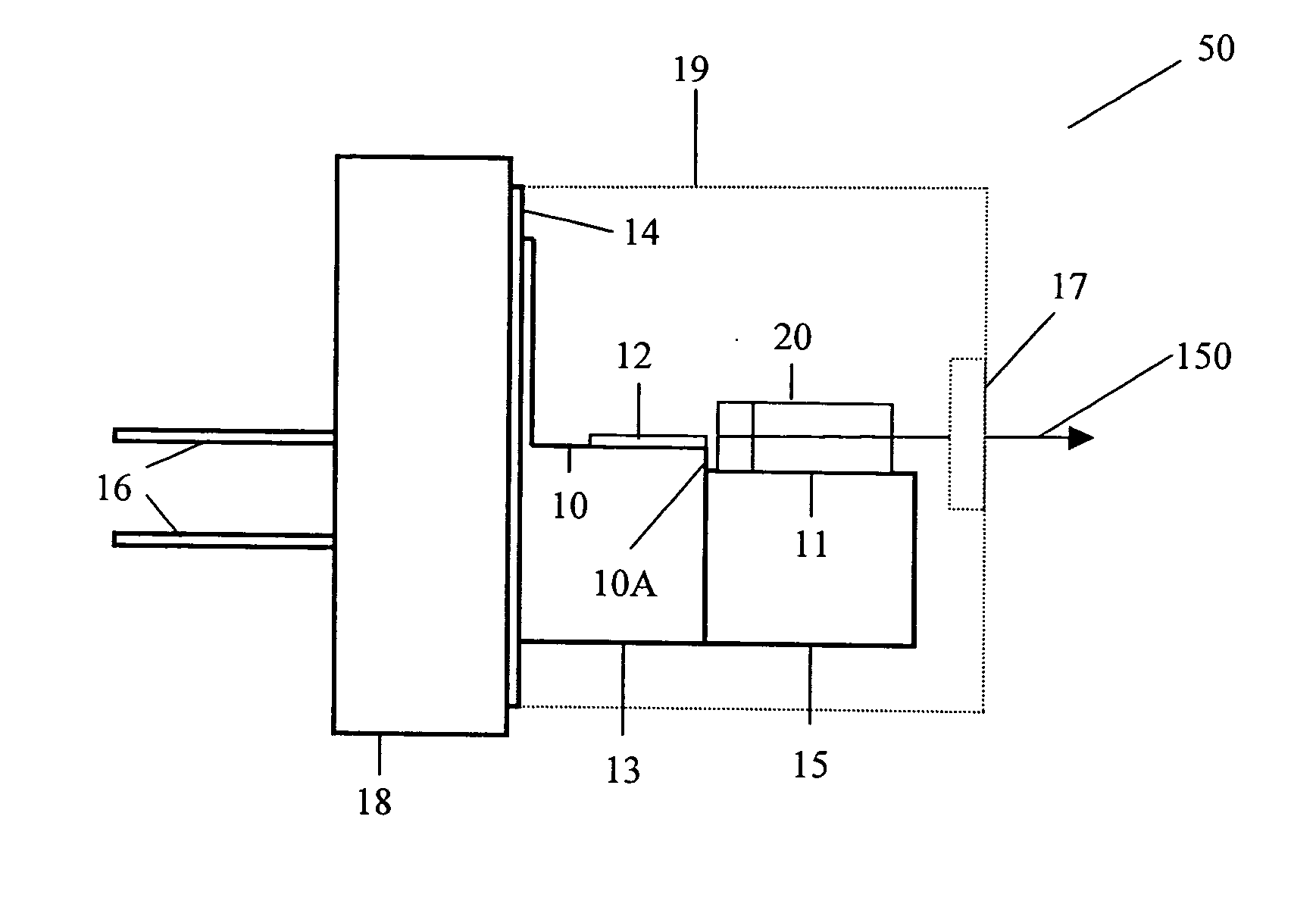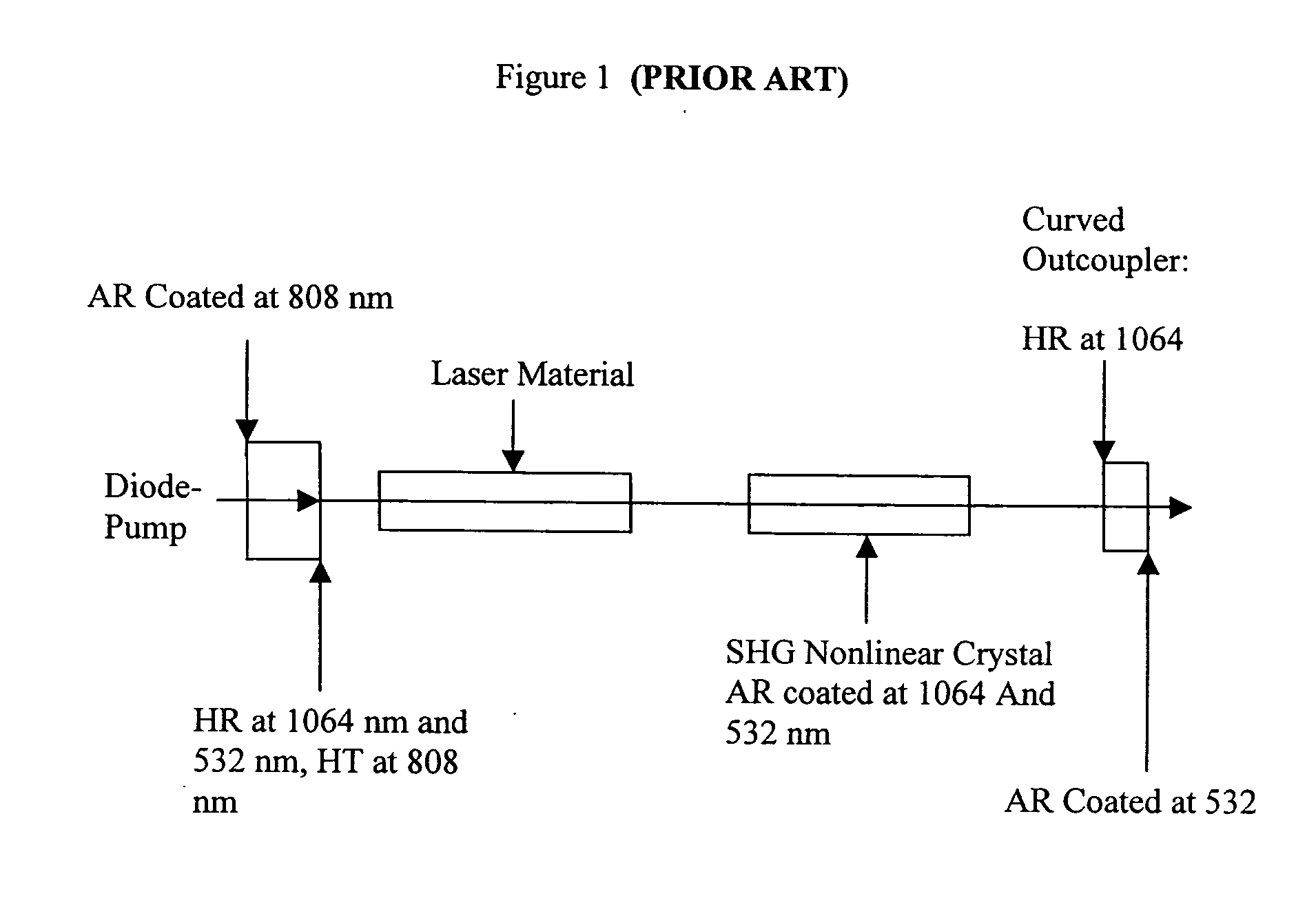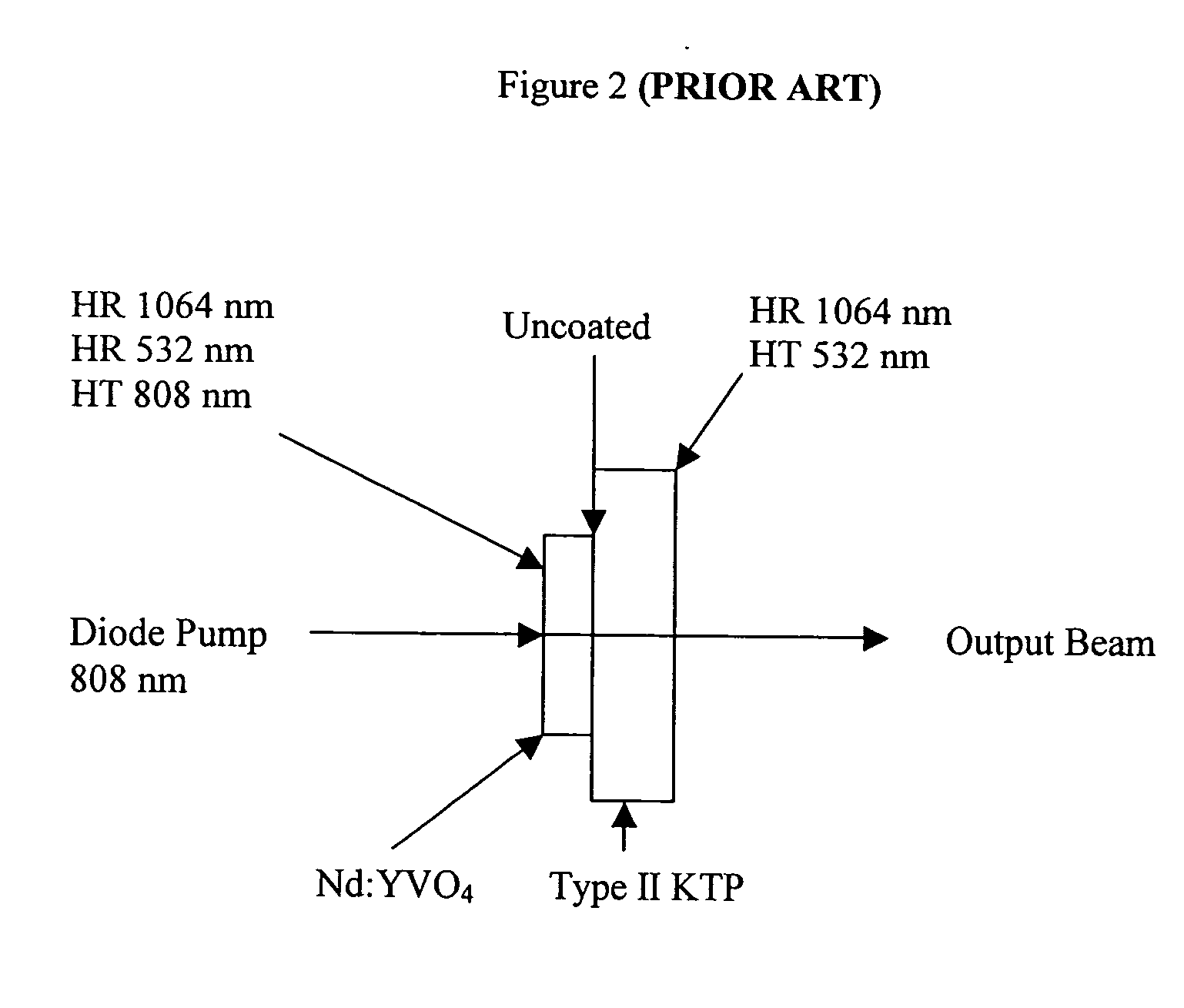High density methods for producing diode-pumped micro lasers
a diode-pumped, micro-laser technology, applied in semiconductor lasers, biochemistry apparatus and processes, active medium materials, etc., can solve the problems of low beam quality, high cost, and inability to produce green wavelengths with substantial output power, etc., to achieve high beam quality, high beam quality, and high beam quality. high-density
- Summary
- Abstract
- Description
- Claims
- Application Information
AI Technical Summary
Benefits of technology
Problems solved by technology
Method used
Image
Examples
Embodiment Construction
[0036] In order to construct miniature high-density low cost lasers three key design and processing aspects must be addressed. These are packaging, crystal fabrication and resonator design. The present invention incorporates unique features in each of these areas that allow various combinations of materials and components to be fabricated so as to address a wide range of operational modalities, but all sharing the common feature of compatibility with miniaturized, low cost, mass producible devices. Turning our attention to the three key design aspects these are discussed separately next.
[0037] 1. Packaging:
[0038] In order to package microchips into useful and mass-producible devices it is important to have a package, that will serve to minimize the overall laser volume while providing the functionality required for laser operation and the low costs associated with mass applications. In one preferred embodiment, a standard diode TO (transistor outline) package is modified to accomm...
PUM
| Property | Measurement | Unit |
|---|---|---|
| power | aaaaa | aaaaa |
| power | aaaaa | aaaaa |
| green power output | aaaaa | aaaaa |
Abstract
Description
Claims
Application Information
 Login to View More
Login to View More - R&D
- Intellectual Property
- Life Sciences
- Materials
- Tech Scout
- Unparalleled Data Quality
- Higher Quality Content
- 60% Fewer Hallucinations
Browse by: Latest US Patents, China's latest patents, Technical Efficacy Thesaurus, Application Domain, Technology Topic, Popular Technical Reports.
© 2025 PatSnap. All rights reserved.Legal|Privacy policy|Modern Slavery Act Transparency Statement|Sitemap|About US| Contact US: help@patsnap.com



